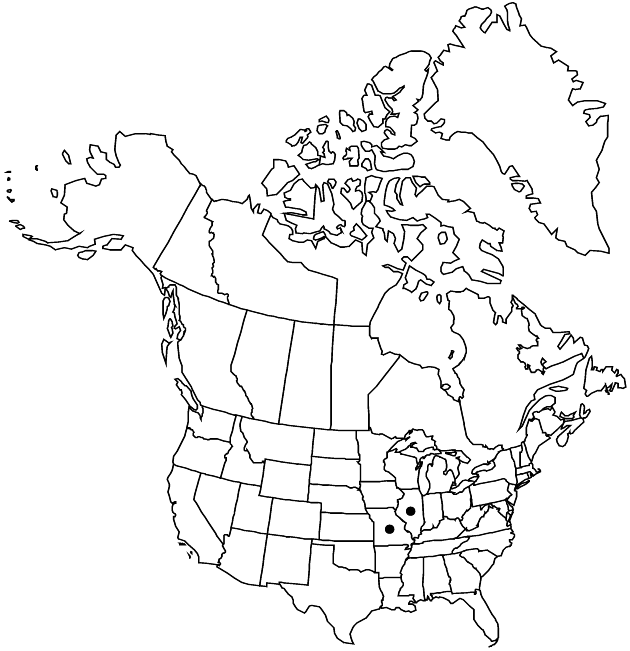Boltonia decurrens
Amer. Bot. Fl., 166. 1870.
Plants 50–200+ cm; basal offshoots, rhizomes, and stolons absent. Stems erect. Leaf-blades linear-lanceolate to narrowly lanceolate; cauline 64–155 × 8–26 mm, bases decurrent. Heads in corymbiform to corymbo-paniculiform arrays; bracts 11–125 × 1–19 mm. Peduncles 3–53 mm; bracts 0–1 (–3), linear to oblanceolate, 3–5 (–9) mm. Involucres 3.2–4.3 × 8–9 mm. Phyllaries in 3–5 series, oblong to spatulate, subequal, apices acuminate to cuspidate, 0–1 merging down peduncles; outer 2.3–3.9 × 0.5–1 mm; inner 3–4 × 0.6–1 mm. Ray-florets 45–60; corollas white to lilac, laminae 9–14 mm, tubes 0.6–1.1 mm. Disc-florets 230–400+; corollas 1.8–2.4 mm. Cypselae obovoid to obcordiform, 1.5–2.6 × 1.1–1.9 mm, wings 0.3–0.4 mm wide; pappus awns 0.8–1.75 mm. 2n = 18.
Phenology: Flowering Aug–Sep.
Habitat: Open alluvial soils in wet prairies, shallow marshes, open river creek and lake shores
Elevation: 100–200 m
Discussion
Of conservation concern.
Boltonia decurrens is known only from the flood plains of the Illinois and Mississippi rivers. Present-day populations are isolated and restricted to disturbed alluvial habitats, old fields, roadsides, and disturbed wet lake shores that replaced its natural habitats of flooded lake shores and marshes. It is in the Center for Plant Conservation’s National Collection of Endangered Plants.
